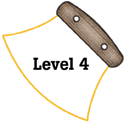
Alaska Science
Key Element A14c
 |
Alaska Science |
|
Performance Standard Level 4, Ages 15–18
|
|
|
|
Sample Assessment Ideas
|
Standards Cross-References
|
||
|
National Science Education Standards Living organisms have the capacity to produce populations of infinite size, but environments and resources are finite. This fundamental tension has profound effects on the interactions between organisms. (Page 186) Organisms have behavioral responses to internal changes and to external stimuli. Responses to external stimuli can result from interactions with the organism’s own species and others, as well as environmental changes; these responses either can be innate or learned. The broad patterns of behavior exhibited by animals have evolved to ensure reproductive success. Animals often live in unpredictable environments, and so their behavior must be flexible enough to deal with uncertainty and change. Plants also respond to stimuli. (Page 187) Natural ecosystems provide an array of basic processes that affect humans. Those processes include maintenance of the quality of the atmosphere, generation of soils, control of the hydrologic cycle, disposal of wastes, and recycling of nutrients. Humans are changing many of these basic processes, and the changes may be detrimental to humans. (Page 198) Materials from human societies affect both physical and chemical cycles of the Earth. (Page 198) Many factors influence environmental quality. Factors that students might investigate include population growth, resource use, population distribution, over-consumption, the capacity of technology to solve problems, poverty, the role of economic, political, and religious views, and the different ways humans view the Earth. (Page 198) Human activities can enhance potential for hazards. Acquisition of resources, urban growth, and waste disposal can accelerate rates of natural change. (Page 199) |
Benchmarks Ecosystems can be reasonably stable over hundreds of thousands of years. As any population of organisms grows, it is held in check by one or more environmental factors: depletion of food or nesting sites, increased loss to increased numbers of predators, and disease or parasites. If a disaster such as a flood or fire occurs, the damaged ecosystem is likely to recover in stages that eventually result in a system similar to the original one. (Page 117) Like many complex systems, ecosystems tend to have cyclic fluctuations around a state of rough equilibrium. In the long run, however, ecosystems always change when climate changes or when one or more new species appear as a result of migration or local evolution. (Page 117) Human beings are part of the Earth’s ecosystems. Human activities can, deliberately or inadvertently, alter the equilibrium in ecosystems. (Page 117) |
|
Table of Contents | Return to Alaska Native Knowledge Network